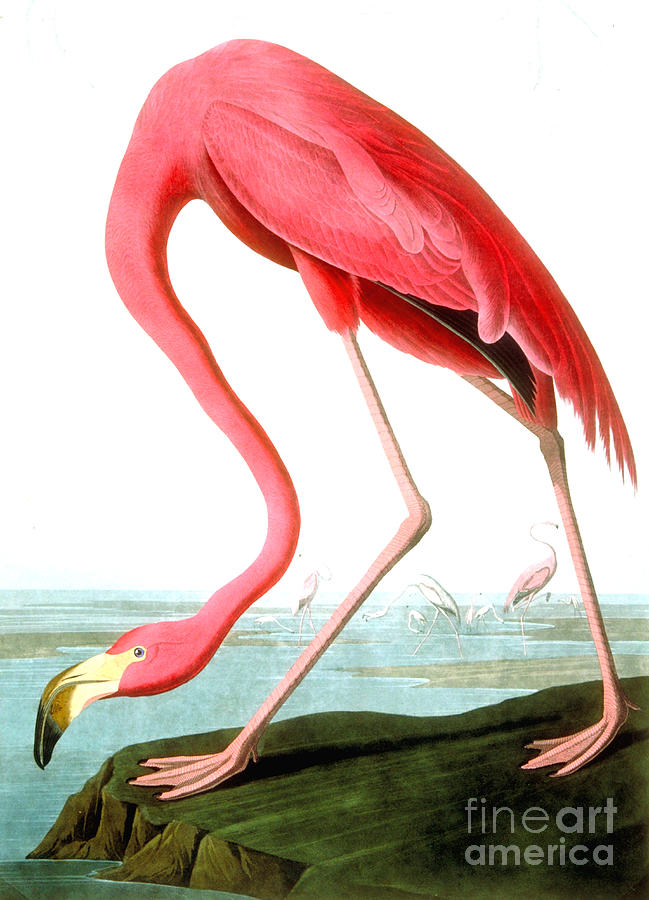


His solution has other advantages since it allows us to study not only the unmistakable plumage but other distinguishing traits that might otherwise be hidden from view: long spindly legs that help the flamingo wade into deep water, webbed toes to support it on muddy ground, a serpentine neck to twist the head backward in the water, and a boomerang-shaped beak to filter water and trap food. Because the American flamingo can stand up to five feet high, Audubon was obliged to depict that bird bending down, about to dip its beak into the water. The images are huge, each about three feet by two feet nevertheless, to make the larger specimens fit the page, Audubon had to mold them into unusual attitudes. He also painted them as near as possible to their actual size.

American flamingo painting autobahn professional#
To make Birds of America useful to both professional and amateur ornithologists, Audubon portrayed his subjects at eye level so that their distinctive markings would be clearly visible. Failing to find support in Philadelphia, he sailed for England, where he became lionized as “The American Woodsman.” The engraving firm Robert Havell and Son took on the challenge of reproducing Audubon’s paintings on copper plates and tinting the resulting black-and-white prints by hand. He worked in watercolor, and had completed some four hundred paintings when he decided to publish them as a folio of prints. His critical innovation was to then thread wire through the specimen, allowing him to fashion a lifelike pose. He would study and sketch a bird in its natural habitat before killing it carefully, using fine shot to minimize damage. Jo Ann continued to explain Audobon’s very innovative process to realistically depict the birds. He moved his family briefly to New Orleans, explored the environs of the Mississippi River, a major flyway for migratory birds, and eventually wandered farther from home to comb the American frontier for unrecorded species. Audubon eventually set himself the heroic task of locating, collecting, and depicting every species of bird native to North America. He lost it through neglect, distracted by the overwhelming bounty and variety of exotic birds he found in the region.

In the first decade of the 19th century he immigrated to the United States to manage a farm his family owned near Philadelphia. Jo Ann gave the kids some background info on John James Audubon explaining that he was born in Haiti and educated in France,where he began to explore the natural environment and develop his talent for drawing and eye for beauty. When his pictures were first published,some naturalists objected to Audubon’s use of dramatic action and pictorial design, but these are the qualities that set his work apartand make it not only an invaluable record of early American wildlife but an unmatched work of American art. Instead, as Jo Ann illustrated, he presented the birds as they appeared in the wild. Although Audubon was not the first to attempt such a comprehensive catalog, his work was a departure from conventional scientific illustration, which showed lifeless specimens against a blank background. She explained that this massive publication includes life-size representations of nearly five hundred species of North American birds. Jo Ann introduced the children to John James Audobon and his monumental Birds of America, issued in four volumes between 18 with his American Flamingo, 1838, one of the 435 hand-colored engravings.


 0 kommentar(er)
0 kommentar(er)
